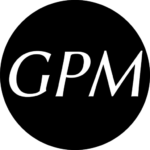Writing Across Technology
Instructor and Coordinator Experiences of a Professional Development Institute for Multimodal Composition

Introduction
At the end of a professional development workshop on using Audacity for soundwriting, Jessie, one of the workshop facilitators asked participants, “How did things go? What are the realities of implementing this [in the classroom]?”
There was a brief pause, as some collected their thoughts and others drew in breaths. And then began what one of the workshop facilitators called “a 20-minute blow-up.”
There was frustration, as many hadn’t finished their podcasts in the time allotted to them. Many struggled with the software. There was also skepticism toward the pedagogical practicability of the activity. “If you don’t know how to ‘move sound,’ you’re screwed,” one participant said. “You can’t do this. So your [class] is ruined.” The conversation accelerated from there: What if my students can’t figure it out? Who helps students troubleshoot when technology breaks down? What if the software crashes student computers? Am I liable? What happens when students don’t have access to required technology in the first place?
Questions about access and technological literacy have been urgent to scholars in the field of computers and writing for decades (Selfe, 1999; Banks, 2006), and they are no less pressing today. But the discursive thrust of the comments from workshop participants was defensive rather than productively critical. As one participant noted, “[T]hey were bringing up really valid points about access to technology . . . but they were belaboring points and just using it as a point to kind of block any kind of learning or knowledge from that. Instead of thinking of possibilities, it was just like, ‘Well, I can’t even engage with this.’”
Although the vocal resistance came from only a handful of workshop participants, the energy in the room became agitated, combative. “You always know that there are going to be people in that room who are not going to be happy. . . . It doesn’t matter what the training is about. And at some point, that will come up,” reflected one of the faculty members who launched the workshop series. “It just takes one or two people to be angry or upset, and it just toxifies… the toxic spill spreads out really quickly.”
The session ended because time ran out. There was no resolution. The anxiety just hung in the air while people filed out of the room. The confrontation left one of the participants involved in tears.
Conflict and resistance are perennial issues for instructor professional development initiatives, especially those involving technology (Swanson-Owens, 1986; Klem & Moran, 1992; Kemp, 2005; Howard, 2013; Brown & Conner, 2019). McGrath and Guglielmo (2014) recount a similar eruption occurring during the technology professional development workshop they offered in their department. Perhaps, as the faculty coordinator quoted above suggests, such moments of conflict are to some extent inevitable. But even if they are inevitable, moments like this provide a window into some of the broader challenges inherent in technology professional development.
In the workshop session described above, it might seem as though anxiety about technology was the spark that caused tensions to flare. But underneath this, a variety of less visible factors form the tinder for the spark to catch. Among these were: institutional pressures for participants to reform their teaching praxis; precarity and paradoxes in participants’ institutional roles; variance in participant motivation and experience level; and even more mundane factors like timing, space, and logistics.
This site explores these factors through participant and coordinator reflections on a technology professional development institute in a public flagship university’s writing program. After providing an overview of relevant literature and this study’s methodology, I discuss four themes that emerged in analysis of the data I collected: expertise, goals, roles, and community. At the end of the chapter, I use findings to construct recommendations and heuristics for building better professional development programs for multimodal composition.
© Gabriel Morrison, 2021

